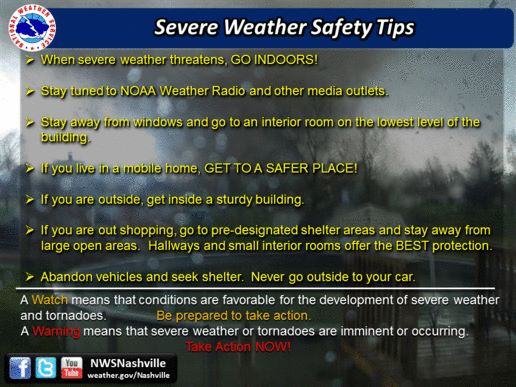Protecting Yourself From Damaging Winds During Storms

Table of Contents
Assessing Your Risk and Preparing in Advance
Proactive preparation is key to mitigating the risks associated with damaging winds. Understanding your vulnerability and taking preventative steps before a storm hits significantly reduces potential harm.
Understanding Your Local Weather Patterns
Knowing your area's susceptibility to high winds and specific storm types is paramount.
- Check historical weather data: Review past weather records to identify the frequency and intensity of strong wind events in your region. Local meteorological offices or online weather archives are valuable resources.
- Subscribe to weather alerts: Sign up for weather alerts and warnings from your national meteorological service or reliable weather apps. Prompt alerts allow for timely preparation and evacuation if necessary.
- Understand storm warning systems: Familiarize yourself with the different levels of storm warnings (e.g., watch, warning, advisory) and understand the actions recommended for each.
Understanding your local weather patterns allows for more informed decisions regarding preparedness and response to impending storms. This knowledge enables you to tailor your safety measures to the specific risks in your area.
Securing Your Home Before a Storm
Strengthening your home's defenses against damaging winds is a crucial preventative measure.
- Trim trees: Remove any dead or weakened branches that could break and become projectiles during a storm. Keep trees trimmed away from your house to prevent damage to the structure.
- Secure loose objects: Bring any loose outdoor items inside, such as furniture, garbage cans, and garden decorations. These objects can become dangerous projectiles in high winds.
- Board up windows: Cover windows with plywood or storm shutters to prevent breakage and reduce the risk of flying glass. This is particularly important for older windows that may not be impact-resistant.
- Reinforce garage doors: Garage doors are often vulnerable to high winds. Consider reinforcing them with additional bracing or installing stronger hinges and tracks.
Using strong materials and employing proper techniques during these preparations is essential for effective protection against damaging winds. Consult with a professional if you have concerns about the structural integrity of your home.
Creating a Family Emergency Plan
A well-defined family emergency plan is crucial for communication and preparedness during and after a storm.
- Designate a safe room: Identify a sturdy interior room, away from windows and exterior doors, to serve as a safe haven during the storm.
- Establish communication methods: Determine how family members will communicate during and after the storm, particularly if power outages occur. Consider pre-arranged meeting points.
- Prepare an emergency kit: Assemble an emergency kit with essential supplies such as water, non-perishable food, first-aid supplies, flashlights, and a battery-powered radio.
A well-rehearsed plan significantly improves your family's ability to respond effectively and safely during emergencies caused by damaging winds.
Staying Safe During High Winds
Protecting yourself during a storm is paramount. Staying informed and taking immediate action are crucial for survival.
What to Do During a Storm
During a storm with damaging winds, your safety is the top priority.
- Stay indoors: Seek shelter in your designated safe room as soon as a high wind warning is issued.
- Avoid windows: Stay away from windows and exterior walls to avoid injury from flying debris.
- Monitor weather updates: Keep your radio or phone on to stay informed about the storm's progression.
- Turn off utilities if instructed: If authorities instruct you to turn off gas, electricity, or water, do so immediately to prevent further hazards.
Being outdoors during high winds is extremely dangerous. Immediate shelter is crucial to protect yourself from flying debris and potential structural damage.
Protecting Yourself from Flying Debris
Flying debris is one of the most significant dangers during storms with damaging winds.
- Seek shelter in a sturdy interior room, away from windows: The safest place is typically an interior room on the lowest level of your home.
- Use protective gear if necessary: If you must venture outside briefly, consider wearing protective gear like a helmet.
Understanding the types of debris that pose the greatest threat (e.g., tree branches, building materials) helps in choosing the safest shelter location.
What to Do After the Storm
Post-storm safety is equally important.
- Check for damage: Inspect your home for damage, but prioritize safety. Avoid areas with downed power lines.
- Avoid downed power lines: Treat all downed power lines as live and dangerous. Do not approach or touch them.
- Report damage to authorities: Contact your local authorities to report any damage to your property or infrastructure.
A safe and thorough post-storm assessment and reporting are crucial steps in recovery.
Protecting Your Property from Damaging Winds
Investing in preventative measures can significantly reduce the impact of damaging winds on your property.
Home Improvement for Wind Resistance
Strengthening your home's structure can greatly improve its resistance to strong winds.
- Reinforced roofing: Ensure your roof is securely fastened and made of materials that can withstand high winds.
- Storm shutters: Install storm shutters on windows to protect them from impact.
- Impact-resistant windows: Consider upgrading to windows designed to resist damage from high winds and flying debris.
Building codes and standards provide guidelines on suitable materials and techniques for improving wind resistance. Consulting with a building professional is advisable for significant home improvements.
Securing Outdoor Structures
Protecting outdoor structures like sheds and garages is equally crucial.
- Reinforce structures: Reinforce the structure of sheds and garages to withstand strong winds. Ensure secure anchoring to the ground.
- Secure loose items: Secure or remove any loose items that could be blown away or become projectiles.
- Consider anchoring: Anchor lightweight structures to the ground using stakes or other anchoring methods.
Protecting Your Vehicle
Protecting your vehicle from damaging winds also helps minimize losses.
- Park in a garage: The safest place for your vehicle is in a garage.
- Avoid parking under trees or near structures: Avoid parking your vehicle under trees or near structures that could fall or collapse during high winds.
- Consider using sandbags: In extreme conditions, you may consider using sandbags to weigh down your vehicle.
Conclusion
Protecting yourself and your property from damaging winds requires a multifaceted approach. By understanding your local weather patterns, securing your home and property in advance, and following safety procedures during and after a storm, you can significantly reduce your risk. Remember to create a family emergency plan and stay informed about severe weather warnings. Reinforcing your home's structure, securing outdoor elements, and protecting your vehicle are all essential steps in minimizing potential damage from strong winds. Don't wait until the next storm; take action today to protect yourself and your loved ones from damaging winds.

Featured Posts
-
 D Wave Quantum Qbts Stock Thursdays Drop And Its Implications
May 21, 2025
D Wave Quantum Qbts Stock Thursdays Drop And Its Implications
May 21, 2025 -
 Kanali 1 1 Stb Inter Ta Inshi Otrimali Status Kritichno Vazhlivikh Vid Minkulturi
May 21, 2025
Kanali 1 1 Stb Inter Ta Inshi Otrimali Status Kritichno Vazhlivikh Vid Minkulturi
May 21, 2025 -
 Nyt Mini Crossword March 24 2025 Clues Answers And Solutions
May 21, 2025
Nyt Mini Crossword March 24 2025 Clues Answers And Solutions
May 21, 2025 -
 Le Theatre Tivoli De Clisson Restauration Et Patrimoine Grace Au Loto Du Patrimoine 2025
May 21, 2025
Le Theatre Tivoli De Clisson Restauration Et Patrimoine Grace Au Loto Du Patrimoine 2025
May 21, 2025 -
 Vybz Kartels Skin Bleaching A Struggle With Self Love
May 21, 2025
Vybz Kartels Skin Bleaching A Struggle With Self Love
May 21, 2025
Latest Posts
-
 Abn Amro Financiert Innovatief Digitaal Platform Transferz Een Analyse
May 22, 2025
Abn Amro Financiert Innovatief Digitaal Platform Transferz Een Analyse
May 22, 2025 -
 Abn Amro Analyse Van De Stijgende Occasionverkopen
May 22, 2025
Abn Amro Analyse Van De Stijgende Occasionverkopen
May 22, 2025 -
 Toenemend Autobezit Occasionverkoop Abn Amro In De Lift
May 22, 2025
Toenemend Autobezit Occasionverkoop Abn Amro In De Lift
May 22, 2025 -
 Occasionmarkt Bloeit Abn Amro Ziet Sterke Toename Verkopen
May 22, 2025
Occasionmarkt Bloeit Abn Amro Ziet Sterke Toename Verkopen
May 22, 2025 -
 Abn Amro De Impact Van Amerikaanse Heffingen Op Nederlandse Voedselexport
May 22, 2025
Abn Amro De Impact Van Amerikaanse Heffingen Op Nederlandse Voedselexport
May 22, 2025
